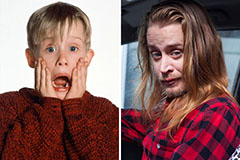Sortable listing of the most important organs on the human body. Features location of organs In the body, whatever they seem like as well as their operate. We’ve bundled a handful of human body areas which are not human organs (greyed out) to make size comparison much easier.
Cardiovascular method Transportation of oxygen, nutrients and hormones through the body and elimination of cellular metabolic waste Respiratory procedure Trade of oxygen and carbon-dioxide concerning the body and air, acid-foundation stability regulation, phonation. Anxious process Initiation and regulation of important body functions, feeling and body actions. Digestive system Mechanical and chemical degradation of meals with purpose of absorbing into the body and making use of as Electricity. Urinary system Filtration of blood and eradicating avoidable compounds and waste by creating and excreting urine. Endocrine system Creation of hormones to be able to control a wide variety of bodily capabilities (e.
History lecturers use many different training solutions. They consist of narrative displays of historical developments, inquiries to interact college students and prompt significant imagining, and conversations on historical matters. College students do the job with historic sources directly to learn the way to analyse and interpret proof, equally independently As well as in group routines. They interact in historic crafting to create the talents of articulating their views Evidently and persuasively.
The heart is undoubtedly an organ situated in the thoracic cavity involving the lungs and marginally into the remaining. It can be surrounded with the pericardium, which retains it set up within the mediastinum and serves to safeguard it from blunt trauma, an infection and support lubricate the motion of the center by means of pericardial fluid.
a instead fluid tissue that fills the interspaces, derived within the mesoderm and from the embryo named mesenchyme
The commercial Revolution experienced a profound impact on economic and social existence, marking the changeover from agrarian to industrial societies.[75] From the research of contemporary history, which began at the conclusion of the 18th century, historians are interested in how the commercial Revolution reworked economies by introducing a lot more productive modes of manufacturing. Western powers established extensive colonial empires, attaining superiority through industrialized military services technological know-how.
Measure the hole among the thumb and index finger to ascertain additional hints your elbow breadth. Elbow breadth is considered a more accurate measurement of body size, based on the IdealBodyWeightChart.com.
Digestion starts while in the mouth, which chews foods into more compact items for less difficult digestion. link Then it is actually swallowed, and moves with the esophagus on the tummy. Inside the belly, meals is combined with gastric acids to enable the extraction of nutrients.
Whereas prior DNA analyses have suggested that marriage alliances that were centered on elite women ended up essential to the Xiongnu, the social tactics in the Hun have but to be researched.
The respiratory method, made up of the respiration passages, lungs, and muscles of respiration, obtains from your air the oxygen needed for mobile metabolism; What's more, it returns on the air the carbon dioxide that forms for a squander item of these types of metabolism.
History education and learning in state schools serves many different applications. A essential talent is historical literacy, the opportunity to understand, critically analyse, and reply to historic claims. By generating students aware of substantial developments in the past, they develop into informed about several contexts of human life, encouraging them understand the existing and its varied cultures. At the same time, history instruction fosters a way of cultural id by connecting pupils with their heritage, traditions, and tactics, as an example, by introducing them to iconic aspects ranging from national landmarks and monuments to historical figures and regular festivities.
Cardiovascular technique The cardiovascular procedure is comprised of the guts as well as the circulatory method of blood vessels. The center is made up of 4 chambers; two atria and two ventricles. Blood enters the guts with the higher chambers of the remaining and suitable atria and exits via the remaining and appropriate ventricles. Heart valves avoid the backflow of blood. The guts acts as being a two-way pump. The right aspect of the guts pumps deoxygenated blood in the pulmonary circulation with the lungs, wherever the blood is reoxygenated once again. Although the left aspect of the heart at the same time pumps oxygenated blood to the systemic circulation, distributing it towards the peripheral look at this site tissues. The frequent pumping, or heartbeat, is controlled from the conduction system of the center. The circulatory method, also called the vascular process, is made up of arteries, veins and capillaries.
Diagram of the human coronary heart The center is made up of two atria and two ventricles. The main objective of your atria is to permit uninterrupted venous blood circulation to the center all through ventricular systole. This allows more than enough blood to acquire to the ventricles through atrial systole.
Initial, the kidneys filter the blood as a result of their respective nephrons, eradicating waste solutions like urea, creatinine and keeping the appropriate harmony of electrolytes and turning the waste solutions into urine by combining them with water with the blood.
 Danny Tamberelli Then & Now!
Danny Tamberelli Then & Now! Michael Bower Then & Now!
Michael Bower Then & Now! Ashley Johnson Then & Now!
Ashley Johnson Then & Now! Macaulay Culkin Then & Now!
Macaulay Culkin Then & Now! Meadow Walker Then & Now!
Meadow Walker Then & Now!